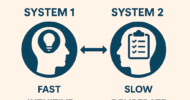As we’ve listened to providers describe their reactions to this pandemic, telehealth continues to be a pervasive theme at the foundation of their response. They refer to this as a “watershed” event that will permanently change healthcare delivery. In that context, many expressed concern that the current relaxation of regulations, and as importantly, the parity payments for telehealth services will be retracted as the crisis eases. While most agree that HIPAA regulations’ relaxation is likely temporary, the question remains as to how telehealth reimbursement is likely to play out.
As providers think about the scope and substance of their service delivery model going forward, it may be helpful to consider the broader context of the pre-pandemic telehealth landscape. Even with relatively slow adoption, we’ve seen the rise of several national vendors that have been able to offer 24/7 virtual visits to patients across the country at $40 to $50 per visit. A major advantage for these companies is that the overhead costs for participating providers are de minimis. They require little if any office space, supplies, or support staff.
On the other hand, consumer surveys have shown that patients prefer telemedicine visits with their own doctors who have access to their medical records. A 2017 national survey showed that almost three times as many people were willing to use telemedicine to see their own doctor versus someone outside that practice. Furthermore, 60 percent of those respondents felt it was important for the telemedicine provider to access their health records.
Based on these consumer preferences, local providers should have a natural advantage over the national vendors. Their established relationships with patients will likely justify somewhat higher reimbursement levels for similar services. That said, in the long run, it is unlikely that patients and payers will tolerate prices equal to those for face-to-face visits. Local provider groups will have to determine how to streamline their workflow and overhead to create a sustainable telehealth capability. Employing a telehealth platform that maximizes efficiency as well as a staffing and space model that reduces overhead will be key success factors.
Another major challenge for local providers will be their overall availability. National vendors offer 24/7 virtual visits with minimal or no wait times. While local providers may want to use these national vendors as their “wrap around” network, they risk losing patient volume and allegiance to this inexpensive, convenient alternative. It may be possible and preferable for local providers, particularly those participating in provider networks, independent physician associations (IPAs) or accountable care organizations to find ways to band together in large enough “coverage” groups to expand their availability significantly.
Telehealth is here to stay. The winners and losers have yet to emerge. Still, patients will ultimately benefit most if their own providers can figure out how to incorporate safe, effective, and efficient telehealth services into their practices.
Martin Lustick is a physician and senior vice-president and principal, NextGen Healthcare.
Image credit: Shutterstock.com




























![Reclaiming trust in online health advice [PODCAST]](https://kevinmd.com/wp-content/uploads/Design-4-190x100.jpg)

